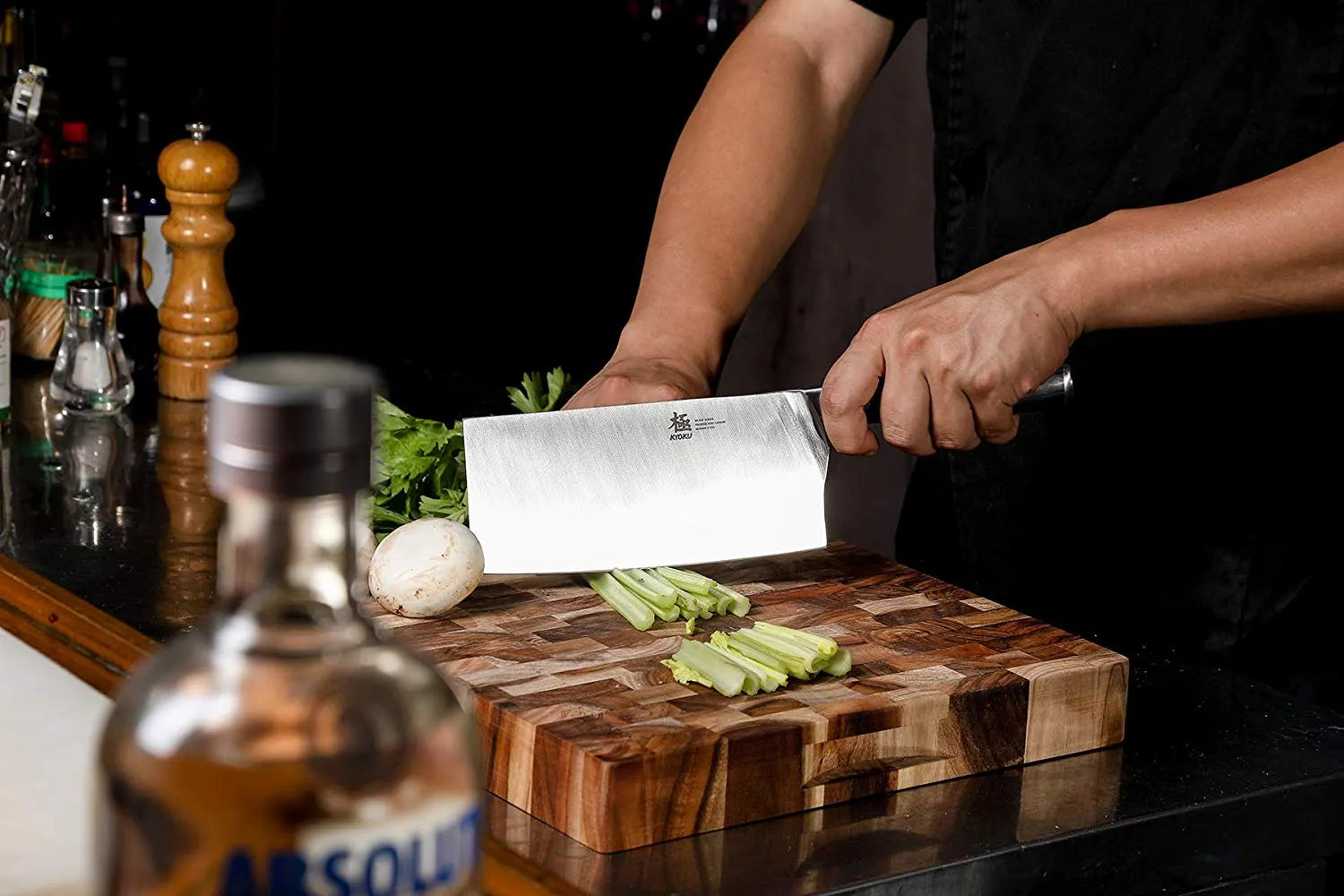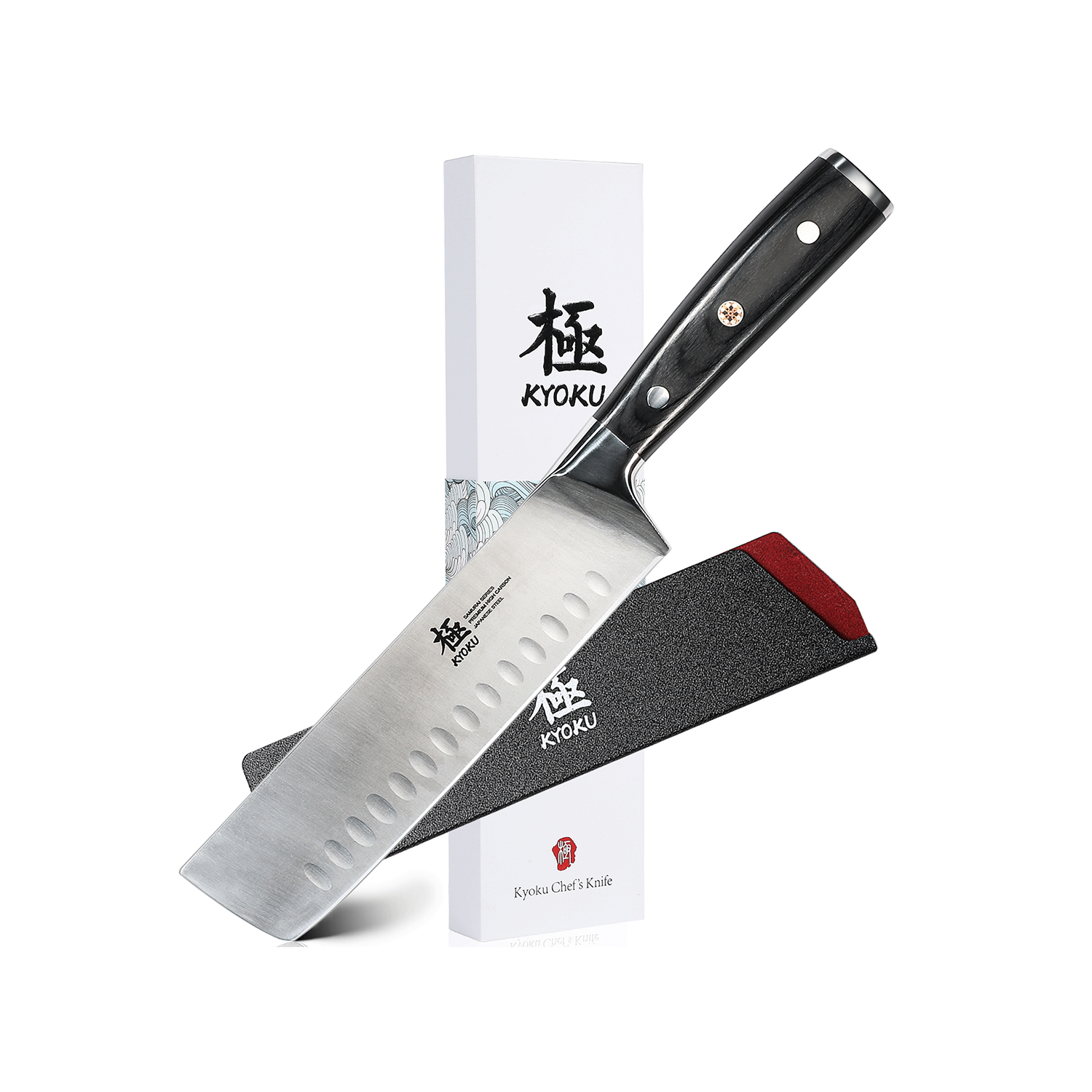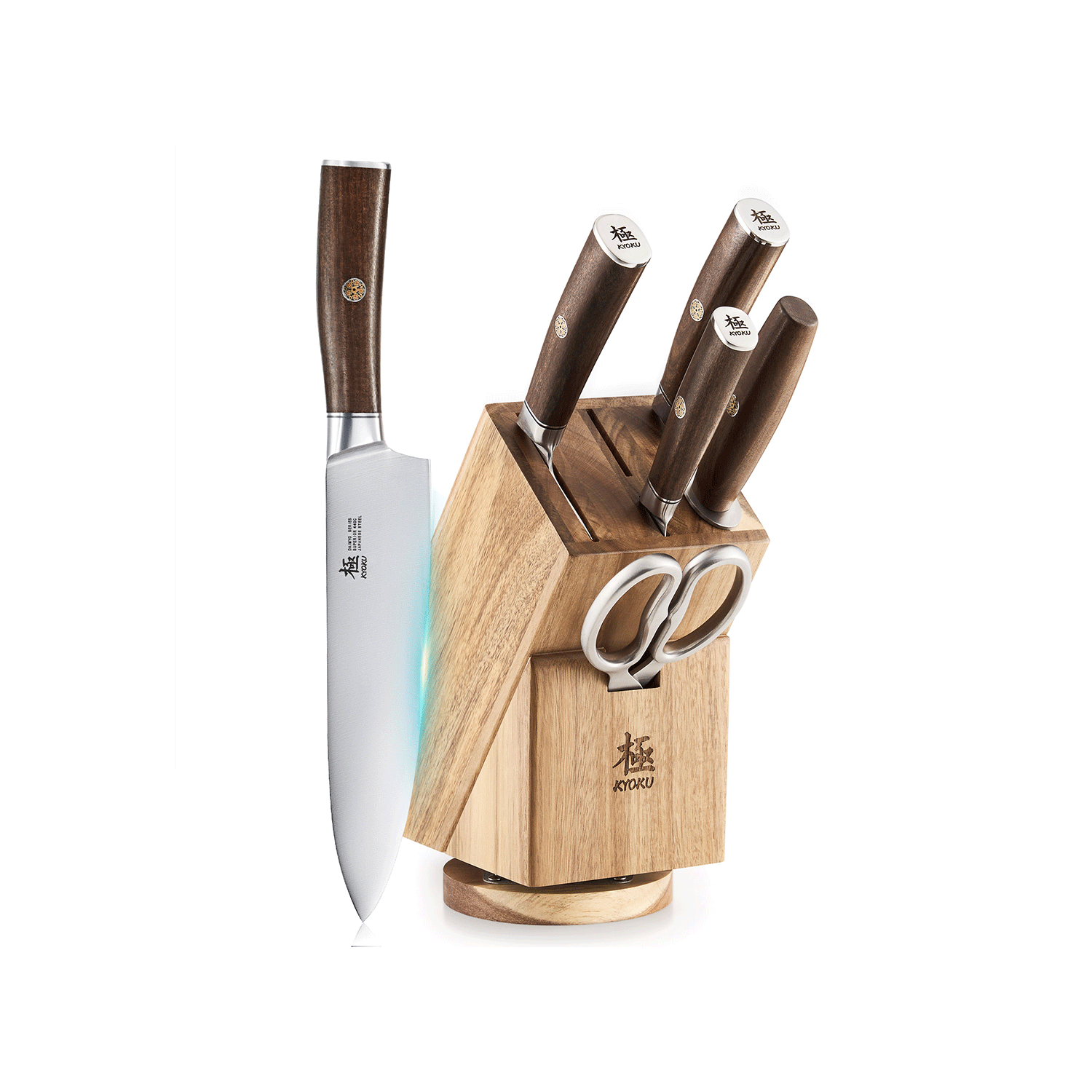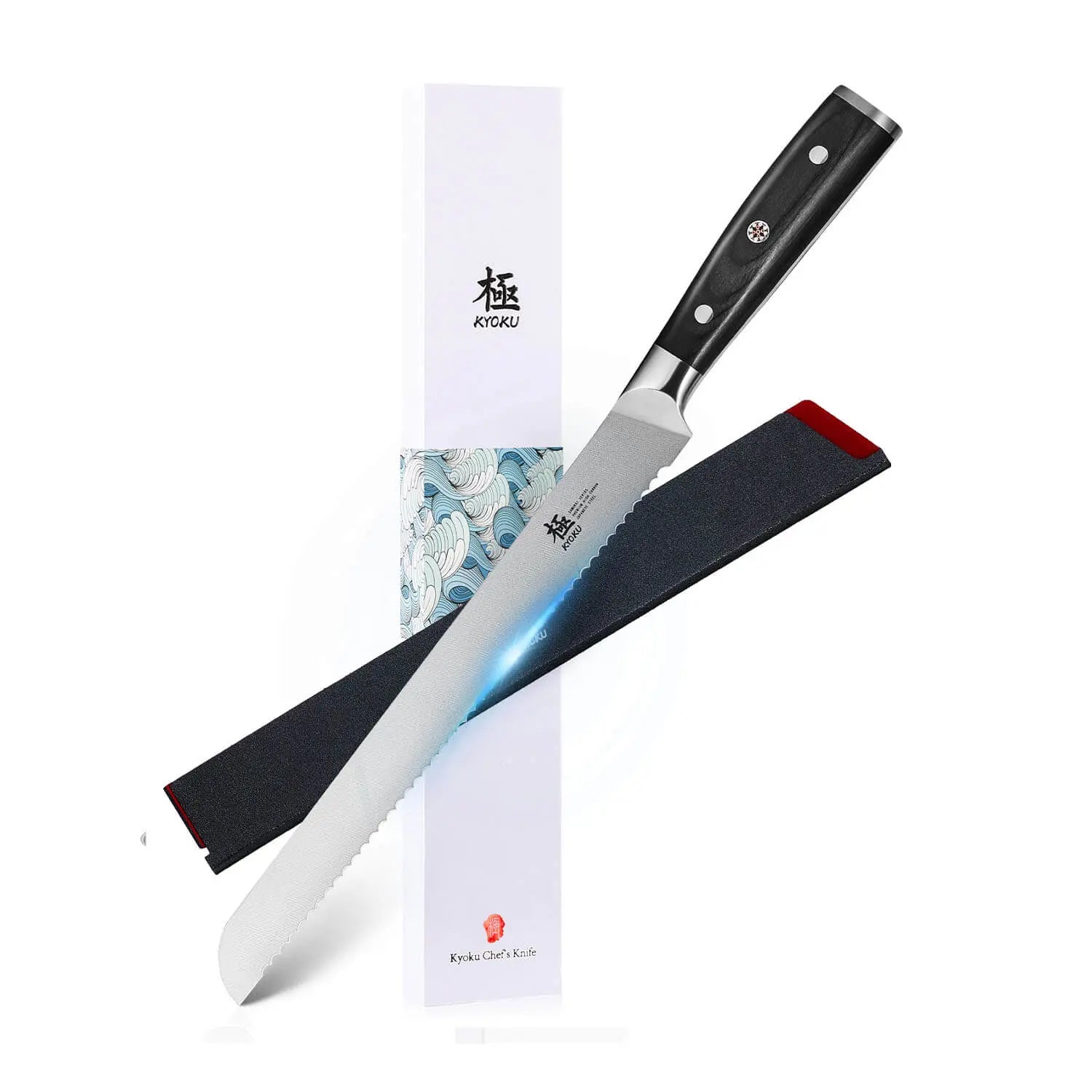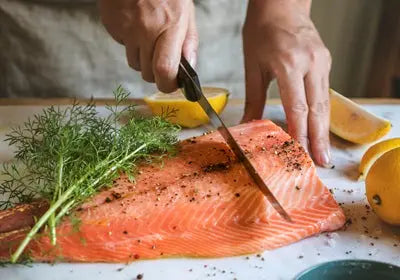Salmon stands out as a culinary favorite due to its rich flavor and flexible cooking options, capturing the hearts of seafood aficionados worldwide. This guide is designed for both the culinary novice and the passionate foodie, aiming to introduce how to cook salmon steaks perfectly from some critical aspects, including assessing salmon quality, adopting straightforward yet effective cooking methods, and selecting the ultimate knives.
How to Tell If Salmon is Good?
The key to a delicious salmon dish starts with its freshness. Here are essential indicators to ascertain the quality of your salmon if you don’t know how to choose salmon at the grocery store:
- Odor: Fresh salmon should have a mild and clean scent, similar to the ocean. A strong fishy smell or ammonia odor may indicate that it might be spoiled.
- Texture: The flesh of the salmon should be firm and spring back when pressed. A slimy or mushy texture can mean the fish is past its prime.
- Appearance: Fresh salmon should boast a bright, pinkish hue. Watch out for any discoloration or fading, which may signal that the salmon is no longer fresh.

How to Remove Skin from Salmon?
In the process of preparing salmon, for those preferring skinless salmon, here's an easy method to remove the skin smoothly:
Step 1: Place the salmon skin-side down on a stable surface.
Step 2: Hold the tail end firmly and position your sharp knife beneath the skin at the opposite end, ensuring that it's angled slightly downward.
Step 3: Use a steady sawing motion to gently separate the skin from the flesh, keeping a firm grip on the skin for smooth removal.
Simple Salmon Cooking Methods
Salmon's versatility shines through various cooking techniques. Knowing this can help you master more recipes for salmon. Explore these methods for a sumptuous meal:
1. Oven-Baking: Enhance your salmon by seasoning it and baking it in a preheated oven. This method allows for an endless variety of flavor adaptations, making it possible to experiment with different combinations of herbs and spices.
2. Pan-Searing: For those who love a beautifully browned crust, pan-searing is the way to go. Heat a pan with a bit of oil until it’s sizzling, then cook the salmon to perfection. This technique ensures that the exterior gets a delightful, crispy sear while the interior stays moist and succulent.
3. Outdoor Grilling: Take your salmon preparation outdoors by grilling it over an open flame. This method not only imparts a unique smoky flavor that’s hard to replicate with indoor cooking methods but also creates a festive atmosphere perfect for social gatherings. Grilling salmon is ideal for those sunny days when dining alfresco is most enjoyable.

HOW TO COOK SALMON STEAKS?
Having known three simple salmon cooking methods, to help you get more details about how to cook salmon steaks perfectly, here is a step-by-step guide adopting the pan-searing method as an example for you:
Step 1-Preparation: Begin by generously seasoning both sides of the salmon steaks with kosher salt and freshly ground black pepper. For a uniform distribution, sprinkle the seasoning from at least 6 inches above the steaks. Anyway, you can always season the steaks according to your own preference.
Step 2-Heating the Cooking Surface: Heat your pan to medium-high heat. Starting on a hot surface is crucial as it helps the salmon sear properly and prevents sticking.
Step 3-Adding the Salmon: Once the pan is hot, add a small amount of olive oil. Place the salmon steaks in the pan and let them sear undisturbed. This initial sear should last 3-5 minutes until the steaks release easily from the cooking surface.
Step 4-Flipping the Steaks: Carefully flip the salmon steaks using a spatula, being cautious of grease splatters. Allow them to cook on the other side for another 3-5 minutes until they are opaque in the center. To avoid overcooking, which can dry out the salmon, remove the steaks just before they reach full opacity. The residual heat will continue to cook the salmon slightly as it rests.
Step 5 Final Doneness: Aim for an internal temperature of 145°F (63°C) to ensure optimal doneness. This temperature ensures that the salmon is cooked through but still moist and tender.

Best Knives to Slice Salmon: Essential Tools for Perfect Steaks
Selecting the right knife is essential for achieving perfection in cooking salmon steaks. A good knife ensures precise cuts, maintains the integrity of the fish's texture, and enhances the overall preparation experience. Here are the top knives recommended for slicing salmon, each contributing uniquely to the process:
1. Slicing Knife: The slicing knife is perfect for achieving thin, consistent slices. With its long, sharp blade, a slicing knife allows for smooth, precise cuts without tearing the delicate flesh of the salmon.
2. Santoku Knife: Known for its versatility, the Santoku knife features a granton edge to minimize sticking, making it excellent for slicing salmon.
HOW LONG IS COOKED SALMON GOOD FOR?
Storing cooked salmon in the fridge can allow you to enjoy its flavors safely for up to three days. To ensure the salmon retains its quality and remains safe for consumption, here are some key practices to follow:
1. Cooling and Packaging: Before placing the cooked salmon in the refrigerator, let it cool to room temperature. Once cooled, transfer it to an airtight container or securely wrap it in cling film or aluminum foil. This step is crucial to avoid bacterial growth and maintain the salmon's freshness.
2. Timely Refrigeration: It is important to refrigerate the cooked salmon promptly, ideally within two hours of cooking. This quick action helps prevent the growth of harmful bacteria that can lead to foodborne illnesses.
3. Optimal Storage Duration: Cooked salmon, when stored properly, is best consumed within three days. Keeping it beyond this period increases the risk of spoilage and potential foodborne diseases, so it's wise to enjoy or discard the salmon within this timeframe.
4. Safe Reheating: When you're ready to enjoy your leftover salmon, make sure to reheat it thoroughly. Whether you're using an oven, microwave, or stovetop, the goal is to heat the salmon until it reaches an internal temperature of 165°F (74°C) to eliminate any bacteria that may have developed during storage.

Conclusion
Perfecting salmon steaks is both an art and a science, requiring fresh ingredients, precise techniques, and the right tools. This guide offers you the essentials of how to cook salmon steaks perfectly—from mastering various salmon cooking methods like pan-searing and grilling to selecting the best knives for clean cuts. Embrace these practices to elevate your cooking and delight in the perfect salmon steak every time. With these skills, you can enjoy beautifully prepared salmon steaks that are flavorful and satisfying!



